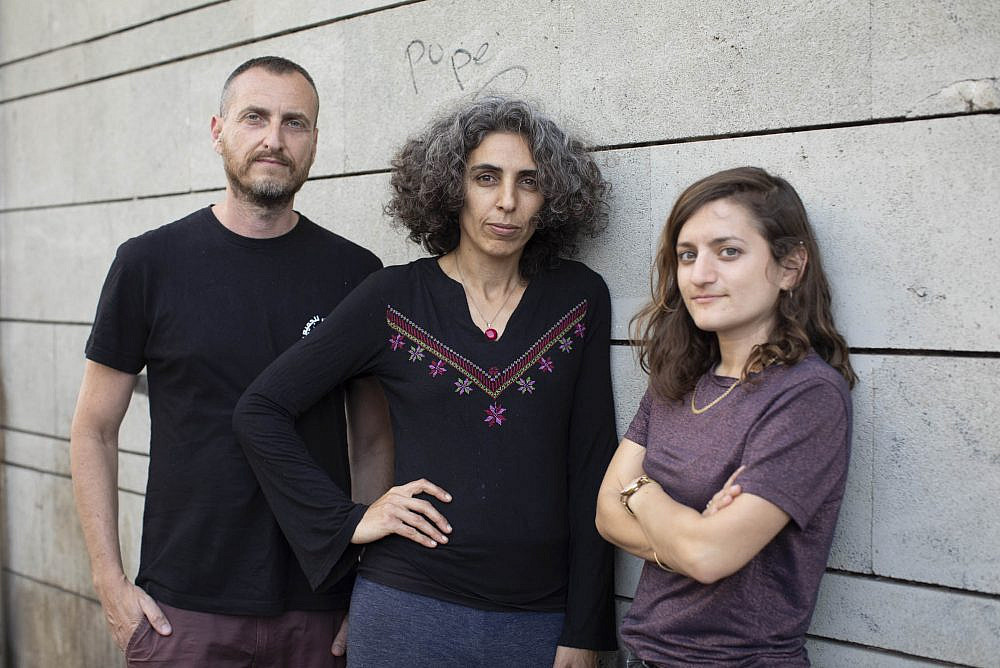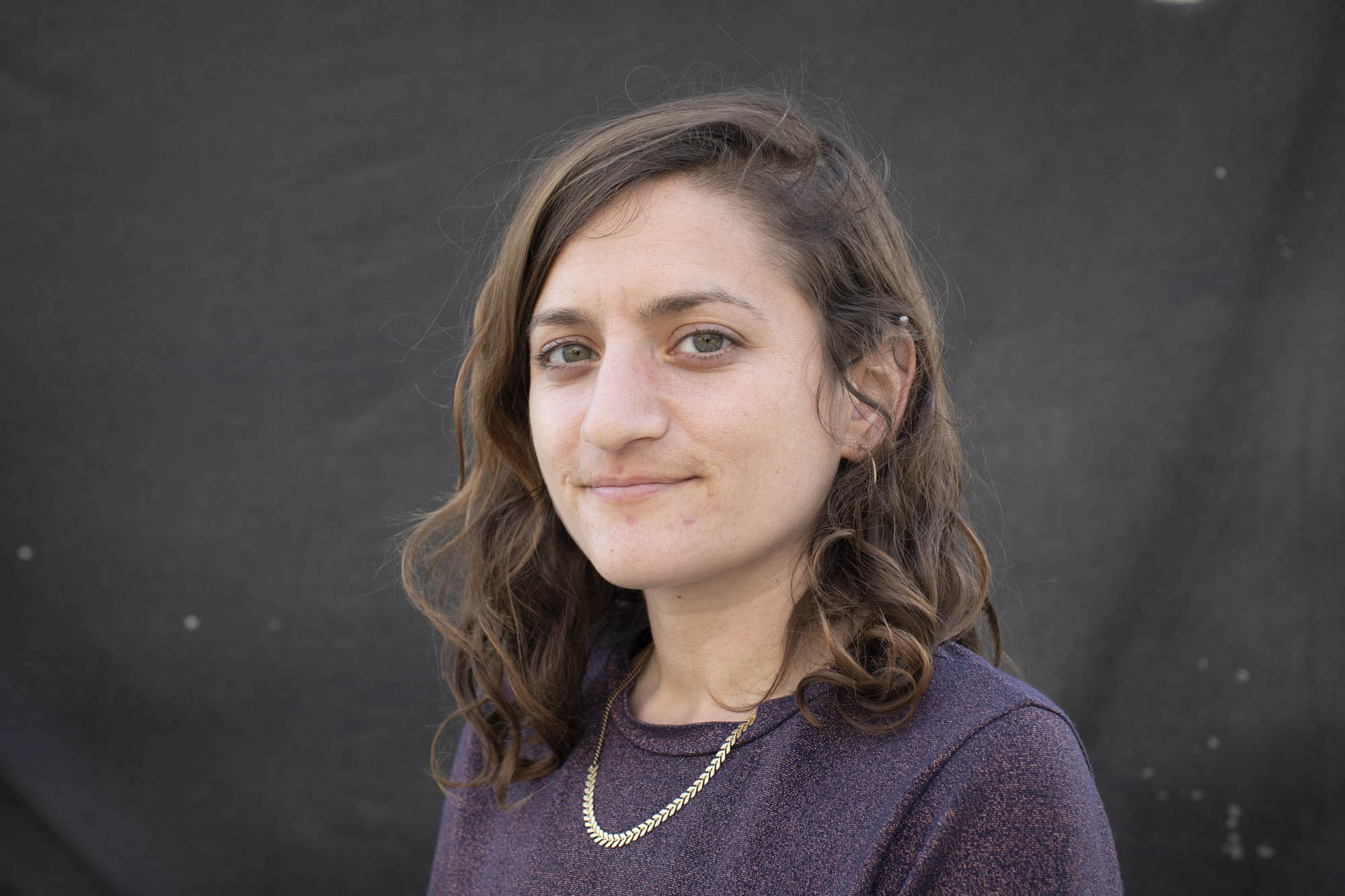In the South Hebron Hills in the occupied West Bank, the Palestinian village of Umm al-Kheir has effectively been sandwiched between the residential area and industrial chicken coops of the Carmel settlement. Electricity lines from the Israeli residences stretch above the Bedouin community while ground water pipes run below, delivering power and water to Carmel’s chicken coops on the other side of the village, neatly bypassing the Palestinian residents who have no running water and are not connected to any electrical grid.
Carmel was founded in 1981 on land that belonged to Umm al-Kheir, which itself was built on land bought from Palestinians in the nearby city of Yatta, after Israel expelled Bedouin communities from the Arad desert in the early 1950s.
Umm al-Kheir was one of the stops on a pilot tour of the area conducted on April 19 by One Climate, a new environmental justice group working to foster awareness of the Israeli occupation’s ecological impact, together with anti-occupation group Breaking the Silence. The tour, planned for a group of Israelis, included an overview of several settlement dairies in the area and meetings with Palestinian community activists.
“The effect of climate injustice can be felt on all of the land between the river and the sea,” said Yuli Gershoni, one of the founders of One Climate, during a tour stop at the Beit Yattir dairy barn. “It is a very rich biological ecosystem between Asia, Africa, and Europe, which also makes it very sensitive to environmental changes,” she continued. The roads, checkpoints, and walls built to serve the settlements disrupt the flora of the area, she added. They also affect the natural migration patterns of fauna, and disturbs their natural nesting sites.

The One Climate founders began organizing with discussions over Zoom almost at the onset of the COVID-19 pandemic. In September 2020, between national lockdowns, they held one of their first tours in the Sha’ar Shomron area, east of Kufr Qasem and Rosh Ha’ayin, where the local council has approved plans to build a sizable Jewish cemetery. Other plans are in the works to expand an existing quarry and to create a 3,000 dunam industrial zone in a now pristine area of nature nearby. The group held a demonstration against the quarry expansion with environmental and anti-occupation activists joining forces. A petition drive against the expansion garnered 100 signatures, and included supporting legal petitions from Combatants for Peace and the Arava Institute for Environmental Studies.
“We are trying to raise awareness for Israelis who don’t know what is going on here. Many people don’t realize there is a connection between climate change and the occupation,” said Mor Gilboa, a veteran environmental and anti-occupation activist, and a One Climate co-founder. Whereas temperatures worldwide are increasing by 1.1 degrees Celsius, in Israel and its natural surroundings, it went up by almost 1.5 degrees between 1950 and 2017 according to a 2019 report by the Israel Meteorological Service, Gilboa explained, emphasizing the interconnectedness of the entire Middle East region. In a recent report, the Israeli Environment Ministry forecasted a 4 degree warming by the end of the century, he added.
Many environmental laws that apply in Israel don’t apply in the West Bank, noted Muna Shaheen, another One Climate co-founder. “We are all sharing the same resources, the same air, the same water, the same temperatures. So, for example, if you take materials which are not allowed to be burned here in Israel and then burn them in the West Bank, two hours away from my house, and abuse that area, it doesn’t make that much difference to the environment,” she said. Israel cares for the environment within its borders, continued Shaheen, but treats the West Bank like a “garbage dump, with a lack of integrity for the people who live there.”
‘Quick, hide the plastic!’
Shaheen has long been interested in the environment, especially in raising awareness around animal rights. Trained as a veterinarian, she transitioned into working with animal rights NGO HaKol Chai on their “Widening the Circles of Compassion” program in 12 Arab schools, which looked at raising awareness and compassion toward animals as a way of reducing violence in society. Shaheen stayed with the organization for three years, and eventually began speaking out about the impact of environmental changes on wild animals.
Shaheen noted that even as she became increasingly invested in environmental issues, she saw that “most people in my community don’t really care that much. It was like there was a constant fight: ‘Oh Muna’s here — quick, hide the plastic!’”
When funding for the HaKol Chai program ran out, Shaheen was put in touch with Gilboa, and the two discussed joining forces to create One Climate.
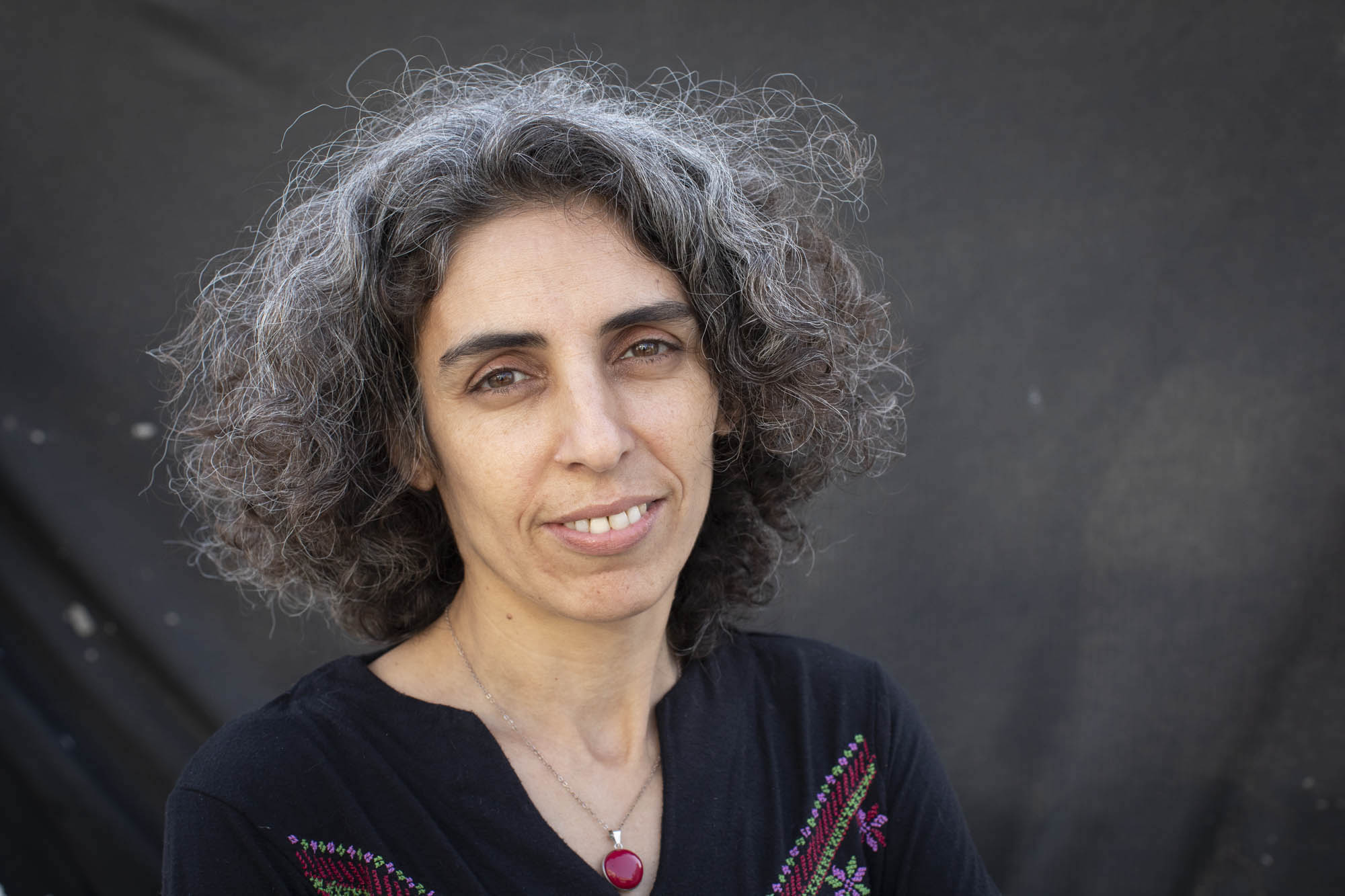
“If I look at my community, the strongest activism is political, so my initial thought was to create an awareness of the connection between [political and climate activism],” Shaheen said. “I am not taking people away from the political issues to the environmental issues, but I am emphasizing the importance of the climate situation. For me, if I look at it with my heart, my main concern is for the environment, not knowing if there were will be a place for my children to live and [with] animals going extinct so quickly.”
She nonetheless acknowledges that the influence of political systems on the environment cannot be overlooked, both globally and locally.
“The way we are living in this current situation of global capitalism creates a situation where resources are being used in an unbelievable way,” Shaheen continued. “And here, the colonialism combined with capitalism creates a situation that allows the Israeli government to take more advantage of the resources — and we are located in a very sensitive, endangered area.”
For 47-year-old Gilboa, meanwhile, making the connection between the occupation and the environment was a natural outgrowth of the political activism he has been involved in since childhood. As a boy he read everything he could on the occupation, and in elementary school presented a project to his class on the First Intifada when it broke out in the late 1980s.
After a years-long struggle with the Israeli army to be released from reserve duty, following his refusal to serve as a medic in the occupied territories, Gilboa became a social activist and progressed into environmental advocacy around the time that the 2011 social justice protests began in Israel. From there, he began working at the intersection of environmental and social justice as executive director of the environmental NGO Green Course. In that role, he also began observing the situation in the West Bank.
Through his strong connection with his grandmother, a Holocaust survivor, Gilboa said he has always been alert to the oppression of others.
“I saw a lot of things going on [in the occupied territories] that were bad for the environment, [and] that if they were happening in Israel all the environmentalists would be fighting against it. But because they were happening in the West Bank, no one knew about it,” said Gilboa. “I couldn’t really act [at Green Course] because it wasn’t within the boundaries of consensus. It was obvious that my next step would be in this direction, but it wasn’t clear to me in what way.”
![One Climate co-founder Mor Gilboa. ‘I saw a lot of things going on in the occupied territories that were bad for the environment, [and] that if they were happening in Israel all the environmentalists would be fighting against it.’ (Oren Ziv) One Climate co-founder Mor Gilboa. (Oren Ziv)](https://static.972mag.com/www/uploads/2021/07/892A1190.jpg)
‘As occupiers we need to take responsibility for what’s going on’
Israel’s settlement enterprise in the West Bank has systematically caused environmental harm since its inception, said Gilboa. This includes issues related to land confiscation, which reduces the space available to Palestinian shepherds and their herds and leads to overgrazing; control over water sources; the destruction of ecological corridors with the building of the separation wall; settler vandalism of tree orchards; and the establishment of large dairies that pollute the environment.
Speakers during the One Climate tour noted that the occupation obstructs Palestinians’ access to water sources, including by settlers who are taking over natural springs in the West Bank that Palestinian farmers have traditionally relied upon. These springs are often used for swimming, and are sometimes polluted — even if unknowingly — by Jewish-Israeli hikers. Wastewater from settlements like Carmel also flows into Palestinian agricultural land.
In addition, some water sources are located within Israeli-declared “security zones,” preventing Palestinian farmers from reaching them and often forcing them to relocate entirely. The Civil Administration — the branch of the Israeli military that governs Palestinians in the occupied territories — further destroys water cisterns under the pretext that they were constructed without a building permit. Israel rejects over 98 percent of Palestinian building permit requests in Area C of the West Bank, which is under full Israeli military control and encompasses much of the South Hebron Hills.
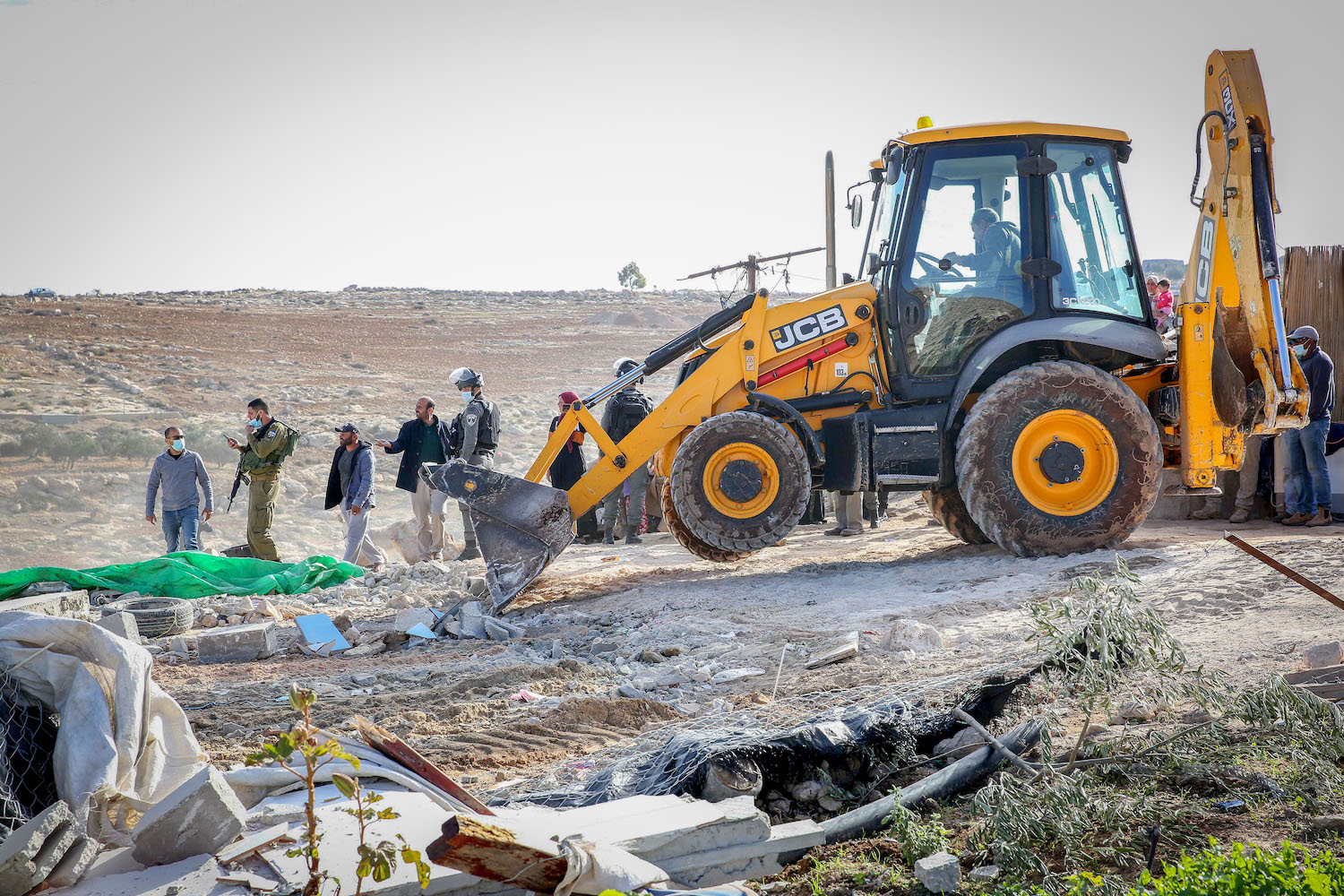
With the climate crisis changing rainfall patterns, crops such as wheat and barley, with which Palestinian farmers feed their livestock, are harder to grow using traditional methods of rainwater irrigation. By preventing the farmers from accessing alternative water sources, the occupation exacerbates the effects of the water shortage, said Becca Stober of Breaking the Silence, who helped lead the One Climate tour.
“As part of the geographical West we are contributing to climate change, and of course as occupiers we need to take responsibility for what is going on [in the West Bank],” noted Strober. “In terms of climate change, there is no zero-sum game. What we are seeing happening in the West Bank, we will have in Israel. It is the same crisis.”
In Wadi Qana, east of Qalqilya, Palestinian farmers found their traditional water supply and way of living destroyed by the creation of several settlements in the area, including Emmanuel and Karnei Shomron, which were constructed in the 1970s and ‘80s, respectively, noted Gilboa. Until 2006, when the settlements were finally connected to sewage infrastructure, the settlements discharged their wastewater into the local stream, spoiling the springs and polluting the water source. The damage forced some 50 Palestinian families to abandon their land and move to the nearby village of Deir Istiya, according to a 2015 B’Tselem report.
While the sewage problem was later partially resolved, the Civil Administration’s Nature Reserves and Parks Unit declared the area a nature reserve, which restricts Palestinian use of the land and prevents them from building and developing on it, the report notes. Furthermore, water drilling in the area by Israeli authorities has reduced the volume of water in the stream, further depriving Palestinian farmers.
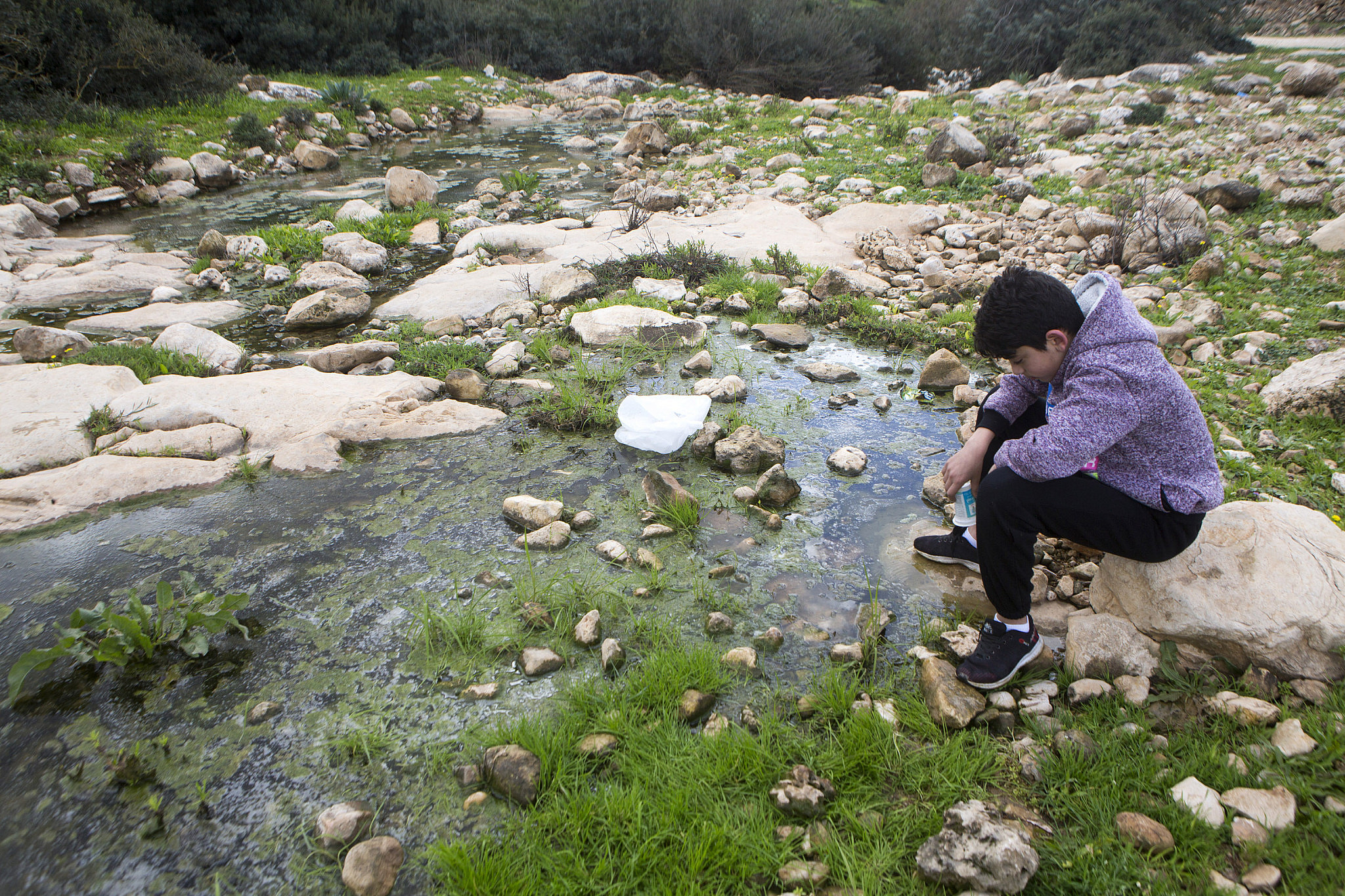
In 1995, the Oslo II Accords established a joint Israeli-Palestinian water committee to manage water and sewage-related infrastructure in the occupied territories. But the committee was almost non-functional from its inception, Gilboa asserted. The Palestinians withdrew their cooperation in 2010 because Israel was conditioning approval of Palestinian applications on the approval of Israeli settlement infrastructures. Following a six-year hiatus, in 2016, Israel and the Palestinian Authority signed an agreement to renew cooperation on water development after behind-closed-doors negotiations reportedly led to a new set of rules, which included that only Palestinian applications would be dealt with.
“This all is a very cynical approach, using the environment as a weapon to make Palestinian life more difficult,” said Gilboa. “We want to make the climate movement in this area much more political, and take into account the climate tragedies that this political situation has created.”
At the same time, One Climate wants to engage anti-occupation and human rights movements in Israel that are focused on the occupation “but are totally blind to the climate crisis that is affecting us and our future,” he said. “Exposing the connection between the two is making us much more accurate in our demands, and more relevant.”
‘Nature belongs to neither Israelis nor Palestinians’
Globally, those who are most vulnerable to the impact of the climate crisis are members of oppressed communities whose ecological imprint is much smaller, notes Ya’ara Peretz, an activist with One Climate. This also applies in Israel-Palestine.
In 2013, a devastating winter storm that left much of Jerusalem without electricity revealed just how exposed marginalized Palestinian communities are to changing weather patterns. Many homes were destroyed in Susiya, a village in the South Hebron Hills, where families who were displaced several times since 1986 now live in tents and ramshackle huts on their agricultural land.
Israel worked quickly to reinstate electricity in Jerusalem, yet no one came to help the residents of Susiya living under Israeli control, said Peretz.
“Many Palestinians on the ground, such as the farmers in Susiya and other villages, expend so much energy on simply trying to survive that they have very little energy left to consider environmental issues,” said Shaheen. Nonetheless, some have started to see and prioritize the connection, she added.
“The weather is becoming hotter and hotter. Every year we have less and less rain and we have less water,” said Fatma Nawje, a social worker and community activist from Susiya. With so many men from the village denied permission to work in Israel, and thus solely reliant on farming — with the attendant scarcity of water — their community exemplifies the increased climate vulnerability of Palestinians living under occupation.
Mazin Qumsiyeh, volunteer director at the Palestine Institute for Biodiversity and Sustainability in Bethlehem, noted that even if the occupation were to end tomorrow, the environmental damage it has caused will remain.
“The situation here is pretty dire in terms of the impact of the occupation on everything, including the [environment], said Qumsiyeh. “Humans created the problem and humans can contribute to the solution. The colonial system exacerbates the already difficult global crisis. We need environmental justice with our resources, so I am ready to talk to anyone who is ready to listen.”
Palestinian researchers at institutions such as Al-Haq and Future Vision have addressed the link between climate change and the Israeli occupation, noting that global warming over the past two to three decades has been detrimental to the agricultural sector and to food security. Damage to the environment is also endangering biodiversity with increasing droughts, desertification of the region, and frequency of severe climate events such as winter storms and heat waves.
While One Climate has made some initial minor overtures to these groups, their attempts to date have not been successful. The group has instead concentrated on working with the small communities in the South Hebron Hills.
For Shaheen, getting other Palestinian activists to get involved has been difficult, particularly because of the power imbalance that exists between Jewish Israelis and Palestinians, even in left-wing activist spaces. “I have been trying to really figure out how to get the Palestinian community to help out,” said Shaheen. “I managed to find [activists] but they didn’t want to work with Israelis or needed Israelis to go through the fire test first. I understand that because we have been wounded again and again.”
As a Palestinian environmental activist from Haifa, Shaheen herself has often struggled to find her place in the climate movement because concern for nature in Israel has become a “Zionist thing,” she said, with protection of the environment reserved for the “beautiful Land of Israel.”
“That is frustrating for me because it doesn’t give me space to come in. I want to work together with integrity only if you understand that I come with Palestinian roots, and I, like all Palestinian people, have needs here,” Shaheen said. “That is the gift of One Climate, with their concept that nature belongs neither to Israelis nor to Palestinians. The time has come to start finding our way together, but we can’t just keep doing this thing of, ‘you have to make do with what I give you because I am the occupier.’”
As they continue to work to unite activists from two different camps, One Climate is still only at the beginning of its journey, said Gilboa, with many issues and decisions yet to be made. “It is quite a challenge because when you fight climate change you are fighting against the stream, and when you fight against the occupation you are fighting against a strong stream,” he said. “But when you fight both climate change and the occupation, you are facing an even stronger stream.”

